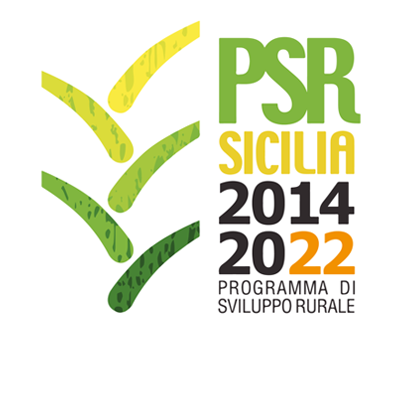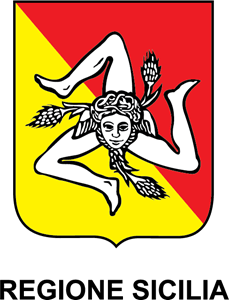Tuli
Country
Specie
ISO3
ZAF
Transboundary name
Tuli
Breed classification (geographic)
International
Adaptability to specific environment
The breed is well adapted to live under the local semi-arid conditions and they are known for their ability to survive in harsh environments.
Specific resistance or tolerance
The breed is reported tick and disease tolerant.
Specific reproductive characteristic
This breed is known for above average fertility. The females are known for calving ease and good maternal traits.
Reference for special qualities
Mrs. S, Moyo; ILCA Report December 1990. Head, Matopos Research Station
Color comments
uni coloured: yellow, golden-brown or red
Number of horns males
0
Number of horns females
0
Horn shape size and comments
thin lyre-shaped horns
Wither height males
120
Weight males
750.00
Weight females
490.00
Other specific visible traits
small thoracic-cervico hump
Herdbook
y
Herdbook established
1994
Domestication status
domestic
Taxonomic classification
Variety
Description of origin
Sanga type: selected from Mangwato, a variety of Tswana
Year of origin
1946
Import
in 1977 from Tuli (Zimbabwe)
Location within country
scattered populations in the Free State, northern KwaZulu-Natal and Northern and North-west Provinces
Local cryo conservation status
No Material
Local Risk
At Risk
Detailed local risk status
Endangered
International Transboundary Risk detailed
Vulnerable
Tswana
Country
Specie
ISO3
ZAF
Transboundary name
Tswana
Other name
West Sanga
Breed classification (geographic)
Regional
Adaptability to specific environment
Animals of this breed are well adapted to hot, dry environments.
Specific resistance or tolerance
This breed has a high level of tick and heat tolerance.
Specific reproductive characteristic
Animals of this breed are fertile and the females are known for their ease of calving.
Special characteristic of product
This breed produces quality hides.
Color comments
multi coloured: various colours
Number of horns males
2
Number of horns females
2
Horn shape size and comments
lyre shaped
Other specific visible traits
Sanga type
Herdbook
n
Domestication status
domestic
Taxonomic classification
Variety
Description of origin
Ecotype of the Nguni breed, a Sanga type, which migrated into South Africa with nomadic Iron Age people between the 3rd and 7th centuries. Regarded as a land race
Year of origin
0
Location within country
North-west Province
Local cryo conservation status
No Material
Local Risk
Unknown
Detailed local risk status
Unknown
Regional Transboundary Risk (detailed)
Unknown
Tauricus
Country
Specie
ISO3
ZAF
Breed classification (geographic)
Local
Number of horns males
0
Number of horns females
0
Domestication status
domestic
Taxonomic classification
Breed
Description of origin
New composite breed
Local cryo conservation status
No Material
Local Risk
Unknown
Detailed local risk status
Unknown
Tabapua
Country
Specie
ISO3
ZAF
Language
eng.
Transboundary name
Tabapua
Breed classification (geographic)
International
Number of horns males
0
Number of horns females
0
Domestication status
domestic
Taxonomic classification
Breed
Local cryo conservation status
No Material
Local Risk
Unknown
Detailed local risk status
Unknown
International Transboundary Risk detailed
Not at Risk
Swedish Red
Country
Specie
ISO3
ZAF
Language
eng.
Other name
Swedish Red and White
Breed classification (geographic)
Local
Number of horns males
0
Number of horns females
0
Domestication status
domestic
Taxonomic classification
Breed
Local cryo conservation status
No Material
Local Risk
Unknown
Detailed local risk status
Unknown
Sussex
Country
Specie
ISO3
ZAF
Language
eng.
Transboundary name
Polled Sussex
Breed classification (geographic)
International
Adaptability to specific environment
The breed is known for its ability to survive and thrive under harsh conditions.
Color comments
uni coloured: red
Number of horns males
0
Number of horns females
0
Wither height males
117
Weight males
950.00
Weight females
575.00
Herdbook
y
Domestication status
domestic
Taxonomic classification
Variety
Description of origin
variety of Sussex, composite of Red Aberdeen-Angus and Sussex from 1950 onwards: Polled Sussex cattle were first imported from the United Kingdom in 1903.
Year of origin
11
Location within country
Northern, North-west, Western Cape, Eastern Cape and northern KwaZulu-Natal Provinces
Local cryo conservation status
No Material
Local Risk
At Risk
Detailed local risk status
Endangered maintained
International Transboundary Risk detailed
Endangered
Supertaler
Country
Specie
ISO3
ZAF
Language
eng.
Breed classification (geographic)
Local
Number of horns males
0
Number of horns females
0
Domestication status
domestic
Taxonomic classification
Breed
Local cryo conservation status
No Material
Local Risk
Unknown
Detailed local risk status
Unknown
South Devon
Country
Specie
ISO3
ZAF
Language
eng.
Transboundary name
South Devon
Breed classification (geographic)
International
Color comments
uni coloured: light red
Number of horns males
0
Number of horns females
0
Weight males
925.00
Weight females
600.00
Herdbook
y
Domestication status
domestic
Taxonomic classification
Breed
Description of origin
This breed was imported from Devon and Cornwall, South-west England in 1879 and possibly originated in the Channel Islands.
Year of origin
1879
Location within country
Free State, northern KwaZulu-Natal and Eastern Cape Provinces, North-western South Africa
Local cryo conservation status
No Material
Local Risk
At Risk
Detailed local risk status
Endangered
International Transboundary Risk detailed
Not at Risk
Simmentaler
Country
Specie
ISO3
ZAF
Language
eng.
Transboundary name
Simmental
Breed classification (geographic)
International
Color comments
uni coloured: dun-red or leather yellow and white, white face
Number of horns males
2
Number of horns females
2
Weight females
548.00
Herdbook
y
Herdbook established
1950
Domestication status
domestic
Taxonomic classification
Breed
Description of origin
imported in 1905 from Simmentaler (Germany) via Namibia by President M.T. Steyn. Large scale exports took place to neighbouring countries between 1880-1897.
Year of origin
1905
Location within country
Western Cape , Eastern Cape, North-west, Northern, Gauteng, Mpumalanga and northern KwaZulu-Natal Provinces
Local cryo conservation status
Sufficient
Local Risk
Not at Risk
Detailed local risk status
Not at Risk
International Transboundary Risk detailed
Not at Risk
Simbra
Country
Specie
ISO3
ZAF
Transboundary name
Simbrah
Breed classification (geographic)
International
Color comments
uni coloured: brownish white
Number of horns males
0
Number of horns females
0
Weight females
517.00
Herdbook
y
Herdbook established
1985
Domestication status
domestic
Taxonomic classification
Breed
Description of origin
This breed is a composite of Simmentaler and Brahman.
Location within country
North-west, Free State, Eastern Cape, northern KwaZulu-Natal, Northern and Mpumalanga Provinces
Local cryo conservation status
Sufficient
Local Risk
Not at Risk
Detailed local risk status
Not at Risk
International Transboundary Risk detailed
Not at Risk




